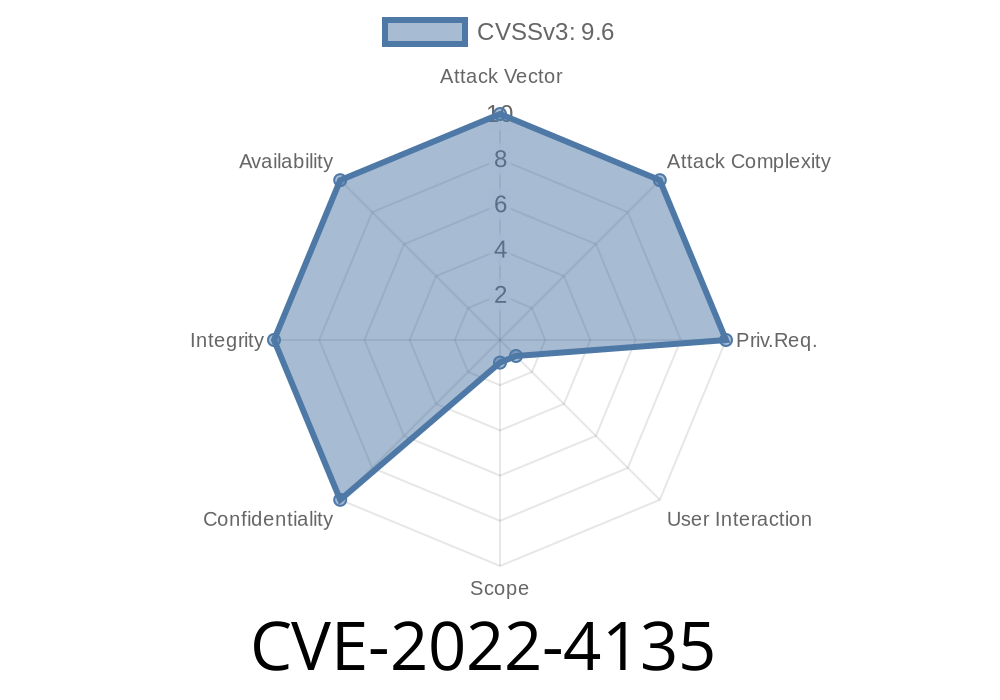A heap buffer overflow vulnerability (CVE-2022-4135) has been identified in the GPU (Graphics Processing Unit) process of Google Chrome prior to version 107..5304.121. This high-severity security issue could potentially allow a remote attacker who has already compromised the renderer process to perform a sandbox escape by using a specially crafted HTML page. It is crucial for Chrome users to ensure that they are running the latest version to protect themselves from this vulnerability.
Code Snippet
The vulnerability lies in the GPU process, but the exact code causing the issue is not disclosed. However, the exploitation of this vulnerability would likely involve a crafted HTML page containing malicious JavaScript that triggers the heap buffer overflow.
For example, a malicious HTML page could contain code as shown below
<!DOCTYPE html>
<html>
<head>
<script>
// Malicious JavaScript code here to exploit the vulnerability
</script>
</head>
<body>
<!-- Content that loads the malicious script and triggers the heap buffer overflow -->
</body>
</html>
This example is intentionally vague to avoid providing a blueprint for potential attackers. But it is important to understand that a crafted HTML page with malicious JavaScript can trigger this vulnerability.
Further details on this vulnerability can be found in the Chromium security advisory
- Chromium Security Advisory: "CVE-2022-4135 - Heap buffer overflow in GPU in Google Chrome"
Exploit Details
To exploit CVE-2022-4135, an attacker would first have to compromise the renderer process in Chrome. Once the renderer process is compromised, the attacker could then use the heap buffer overflow in the GPU process to escape the protections provided by the renderer sandbox. A successful sandbox escape would allow the attacker to gain more control over the victim's system, potentially leading to the execution of arbitrary code on the target machine.
It is essential to note that this vulnerability is not trivial to exploit. An attacker would require a deep understanding of browser internals and the renderer process and likely chain multiple vulnerabilities to achieve their goals. However, the high-severity rating highlights that attackers who can exploit this issue may pose a significant threat.
Mitigation
The best way to protect against this vulnerability is to ensure that your Google Chrome browser is updated to the latest version. Google has patched the vulnerability in Chrome version 107..5304.121, and users are advised to update their browser to this version or later to protect themselves.
Hover over "Help," and click on "About Google Chrome."
4. The browser will automatically check for updates and prompt you to install the latest version if it's available.
Conclusion
Heap buffer overflow vulnerabilities like CVE-2022-4135 can have significant implications if successfully exploited. Ensuring that you are running the latest version of Google Chrome is an essential step in protecting your system from potential threats. Stay vigilant about regular updates and security patches to keep your browser and system safe from attackers.
Timeline
Published on: 11/25/2022 01:15:00 UTC
Last modified on: 11/28/2022 14:44:00 UTC
